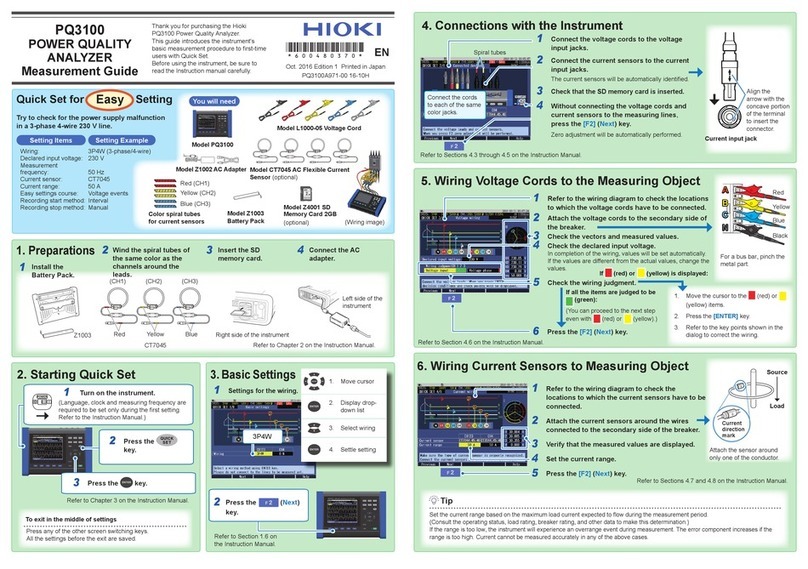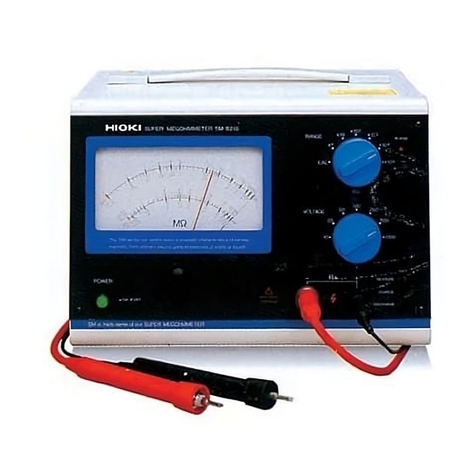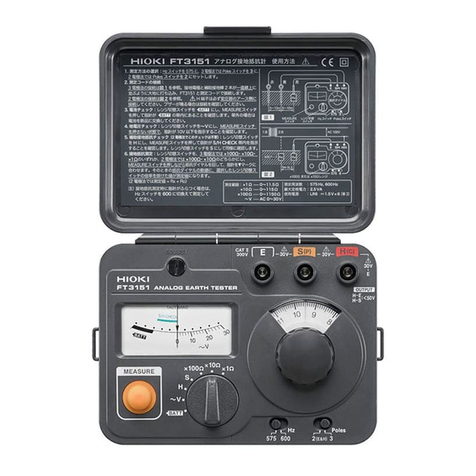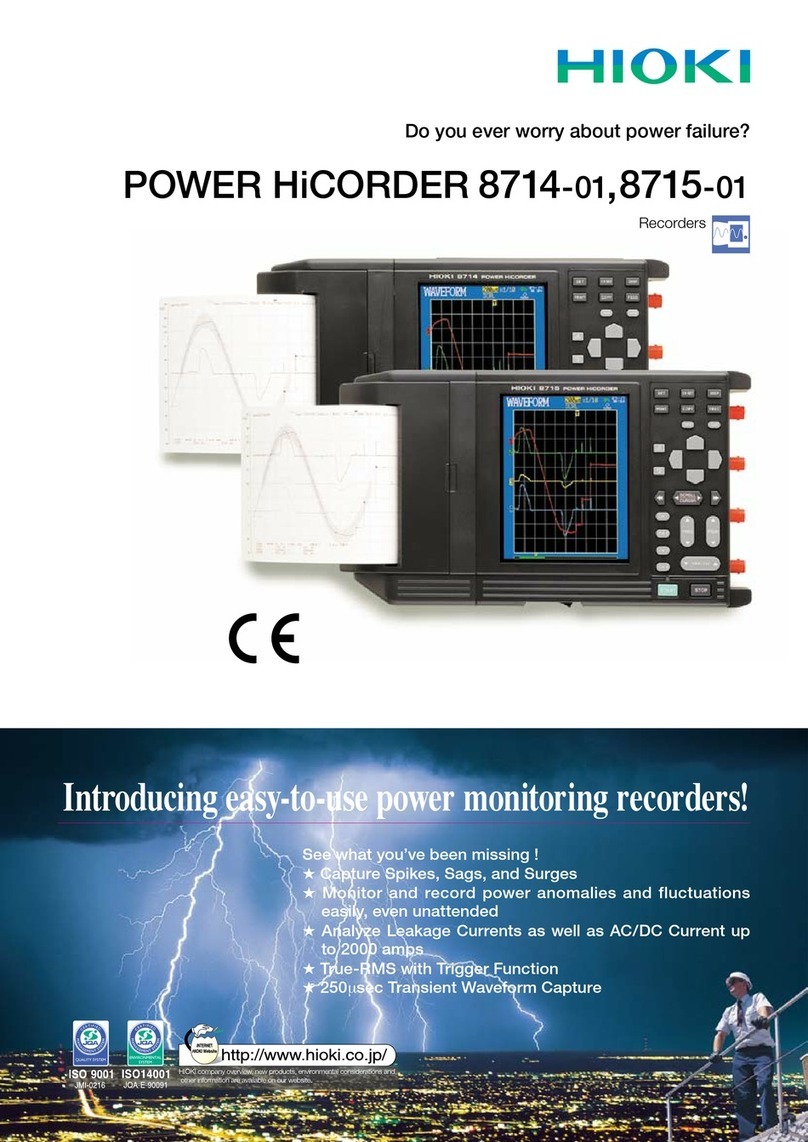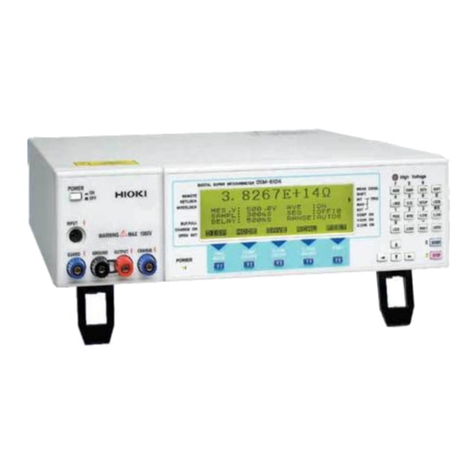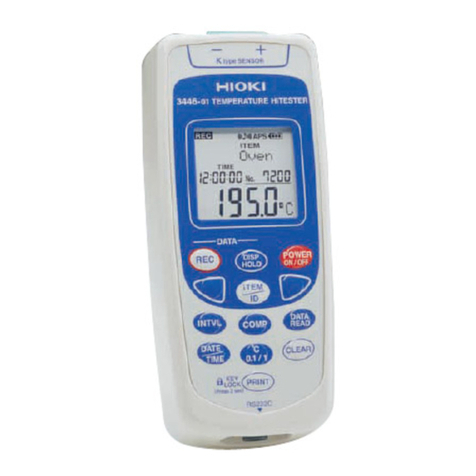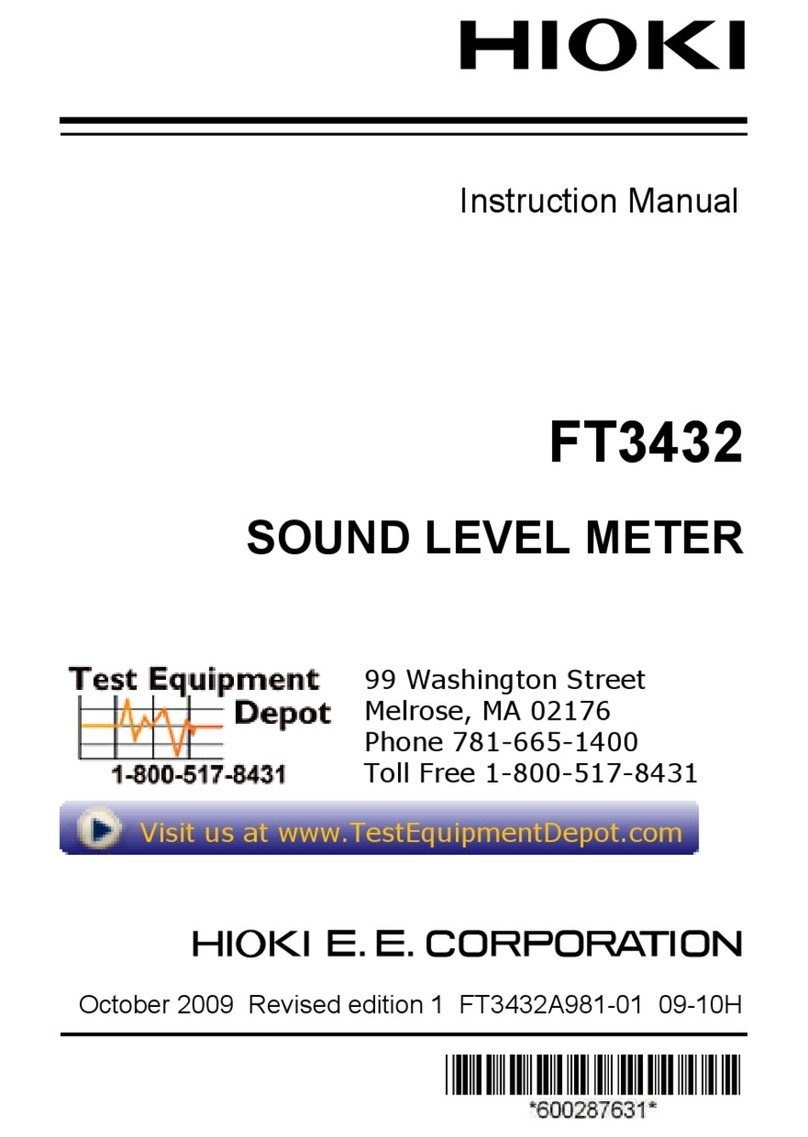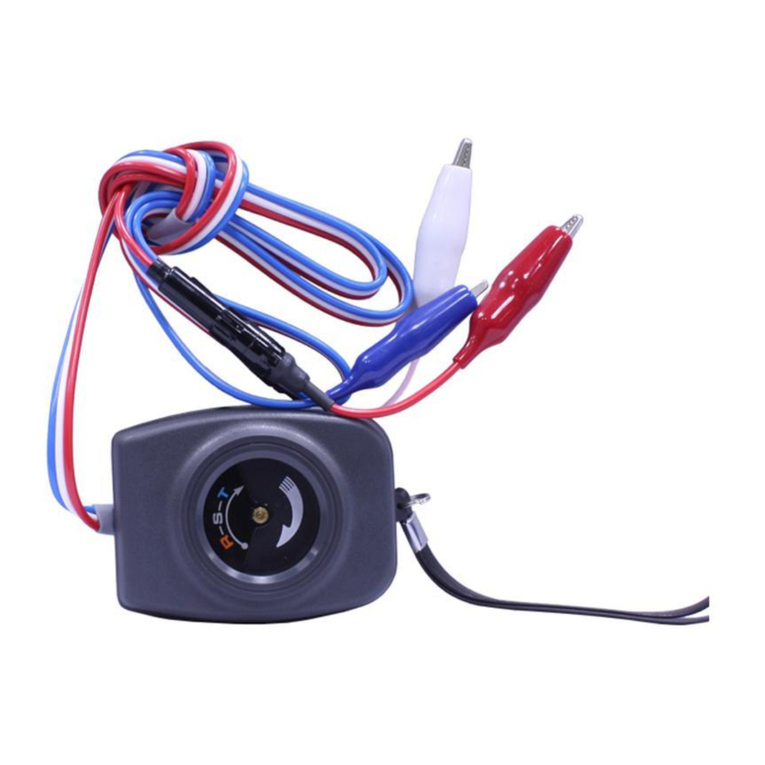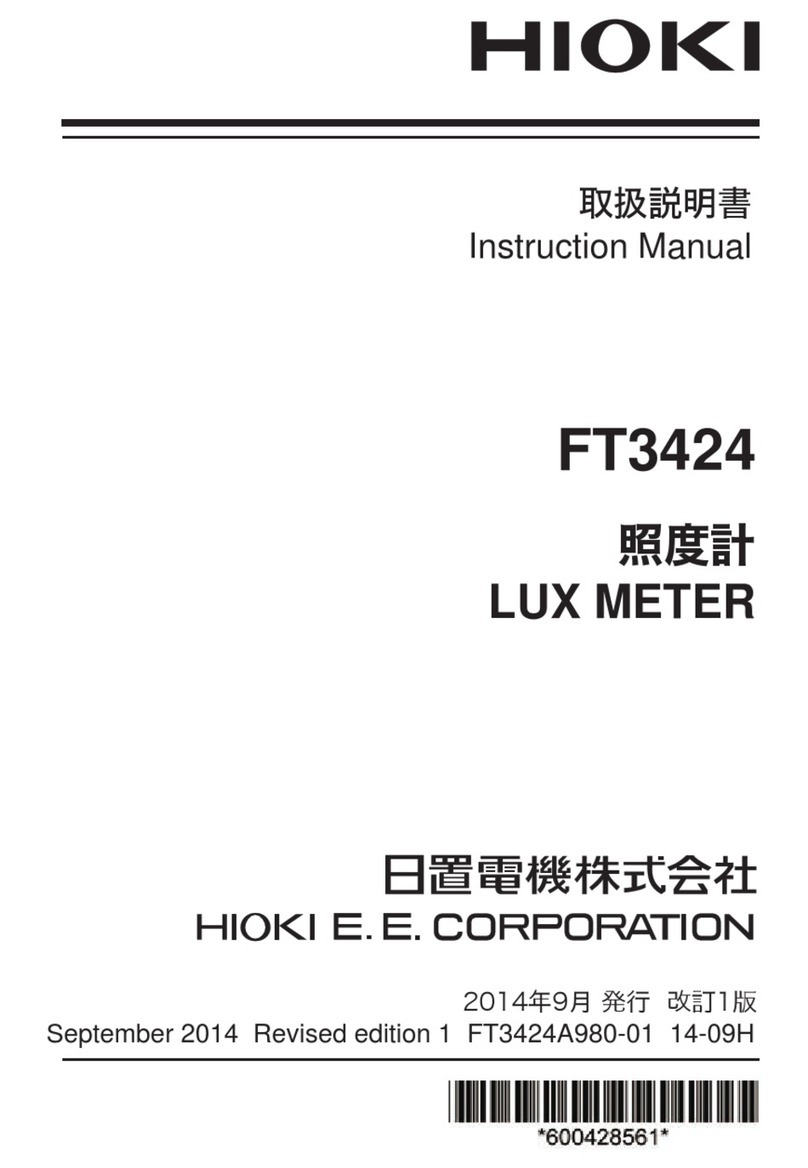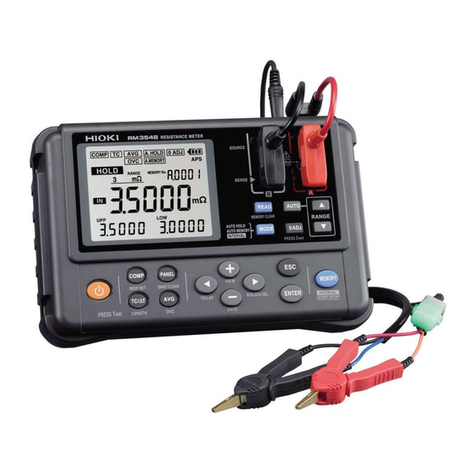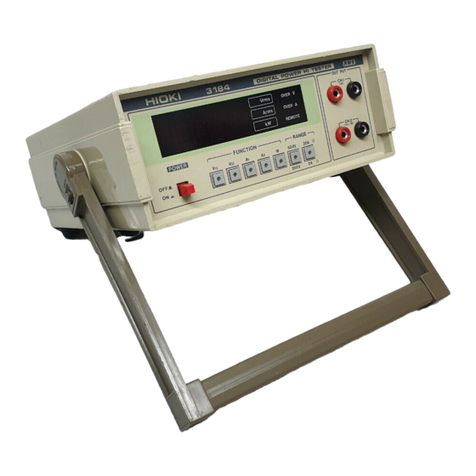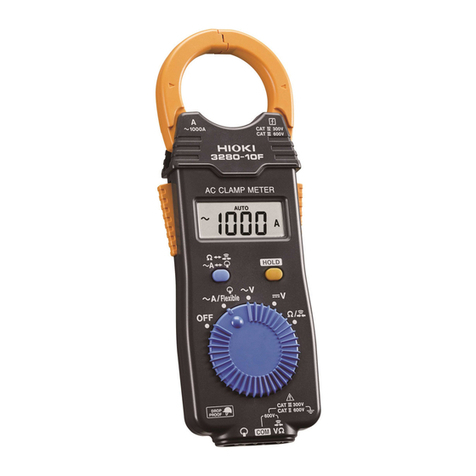
iv
―――――――――――――――――――――――――――――――――――――――
Notes on Use
―――――――――――――――――――――――――――――――――――
CAUTIO
・Before measurement, check the position of the range
switch. The unit may be damaged if current or voltage
exceeds the measurement limit is applied for a long
time.
・Before using the unit, make sure that the sheathing on
the leads is not damaged and that no bare wire is
exposed. If there is damage, replace it with a new one.
・Do not store or use the unit where it will be exposed to
direct sunlight, high temperatures, high humidity, or
condensation. If exposed to such conditions, the unit
may be damaged, the insulation may deteriorate, and
the unit may no longer satisfy its specifications.
・To avoid damage to the unit, do not short the output
terminal and do not input voltage to the output terminal.
NOTE ・After initiating watthour measurement by pressing the
start button, do not alter the settings of the range switch,
the time setting dial or the time unit switch.
・The 3181-01 is not certified for commercial metering.
・The 3181-01 uses a voltage transformer (PT) and current
transformer (CT), which do not transmit DC. It is
therefore not possible to measure a signal (for example
full-wave or half-wave rectified) which includes a DC
component.
・Do not use the 3181-01 to measure equipment with
ratings outside its ranges or whose current consumption
continuously exceeds 15A.


